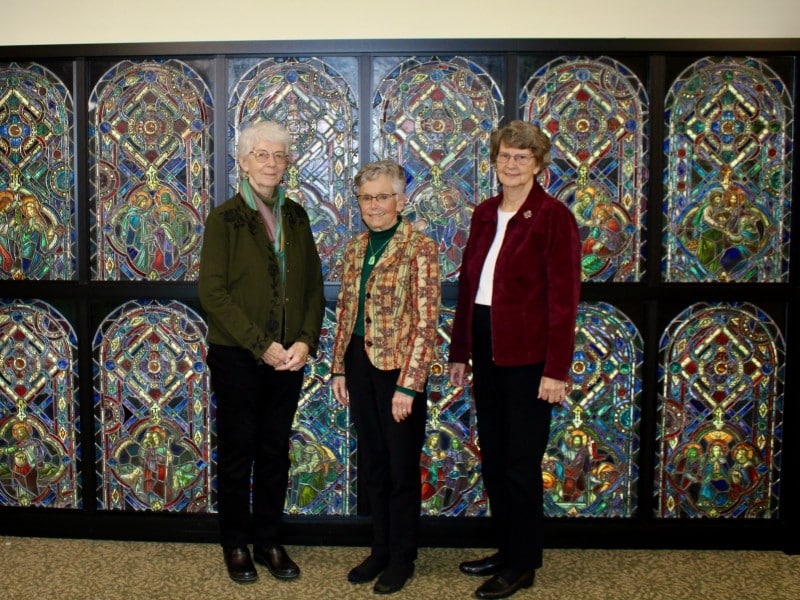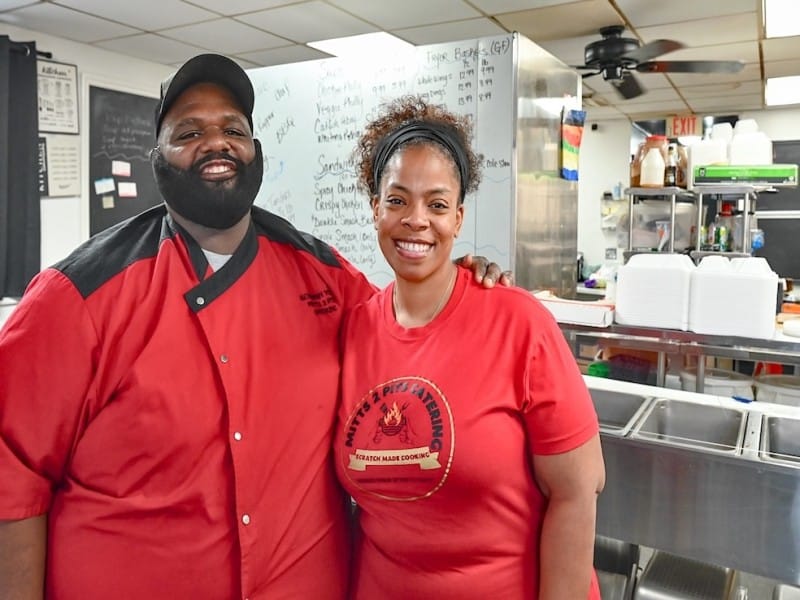April showers bring rain barrels to catch them in Battle Creek
Saving April showers for drier months is easy with a rain barrel, which both helps conserve water and capture storm runoff. In April, the City of Battle Creek is selling rain barrels and composting containers to help reduce environmental impact.
Editor’s note: This story is part of Southwest Michigan Second Wave’s On the Ground Battle Creek series.
BATTLE CREEK, MI — A childhood spent in Arizona taught Kristen Blood all about the value of water. It’s something she never forgot even after she and her family moved to Battle Creek in 2014.
It is the reason she is a strong advocate for the use of rain barrels to harvest rainwater which she uses to water her gardens.
When she was living in Arizona she used to put buckets or cups outside “just to catch some water. The idea of saving water is something I’ve grown up with because of the scarcity.”
Blood, a former Battle Creek City Commissioner, says she doesn’t know exactly when she started using rain barrels at her house in Battle Creek.
“I’ve been collecting rainwater in various fashions since I started growing on our property. Collecting water during any time of the wet season is critical if you want to have any kind of plants.”
However, there are other reasons that proponents of rain barrel usage offer up when talking about the benefits, namely the opportunity to capture rainwater before it runs down driveways and into streets where it picks up sediments and contaminants such as oil which inevitably ends up collecting in storm sewer drains.
In April, the city will offer residents and those living outside of Battle Creek the opportunity to purchase rain barrels and composter containers as a way to reduce their impact on the environment. Patty Hoch-Melluish, City of Battle Creek Environmental and Storm Service Manager, says this sale has been going on annually since 2015.
Those interested in purchasing rain barrels from upcycle may send in mail-in orders until April 8 or make online orders until April 14.
As of 2023, a total of 401 rain barrels and/or rain barrel and compost combinations have been purchased, she says with buyers coming from neighboring communities, including Kalamazoo. In 2022, a fundraiser component was added to the annual sale with 10 percent of the money going to the Battle Creek Area Clean Water Partnership

“Our department is in charge of the city’s stormwater permit. Using rain barrels is a way for individuals to minimize stormwater impacts by keeping rainwater out of the storm sewer system,” Hoch-Melluish says. “Every little bit helps and this is a good way to promote that idea and people get benefits from water conservation from their water bill.”
Blood says, “Runoff is a big deal and the city and the state have been looking at water runoff for a while because of the hard surfaces with contaminants that are picked up. Storm sewers are degrading because we started a system where runoff is the norm and it overwhelms systems that are already overwhelmed.”
This water goes directly into water sources like rivers and creeks, says Christine Kozmowski, President of the Kalamazoo River Watershed Council.
Unlike sanitary waste which is treated at a wastewater treatment plant before being discharged, the water that goes into storm sewers is untreated and goes out into waterways, she says.
“This a non-point source pollution because everybody’s little bit is adding up to a problem,” Kozmowski says.
Non-point Source Pollution is caused by rainfall or snowmelt moving over and through the ground. As the runoff moves, it picks up and carries away natural and human-made pollutants, depositing them into lakes, rivers, wetlands, coastal waters, and ground waters, says information on the Environmental Protection Agency’s website.

“This is not an easy problem to solve and it’s a nationwide problem,” Kozmowski says. “When the Clean Water Act was passed in 1972 the initial focus was on point sources. While larger-scale operations with pipes are easier to measure, if you’re in a residential area, you can’t just go to such and such a house and say you’re dumping contaminants.”
Both Battle Creek and Kalamazoo have wastewater permits which require them to regulate and try to reduce contaminants that go into the sewer system. Kozmowski says other communities within the watershed don’t take those measures, but they are mandated to remove phosphorous which makes its way down to Lake Allegan, a dammed-up part of the Kalamazoo River.
As a result, she says, the lake has poor fish quality and low oxygen and is not considered a healthy body of water, but progress has been made.
“But keeping excess water from getting into storm sewers reduces the amount of phosphorous,” Kozmowski says. “If that rainwater is picking up sediments, leaves, or pet waste and sending it down into storm sewer all of those elements contain phosphorous. It’s been a 20-year effort to reduce phosphorous loadings.”
Barrel Science, not Rocket Science
Hoch-Melluish says for many people turning on a faucet is easier than installing rain barrels, especially those who don’t garden. She says those who do use rain barrels often link two or three together and let the collected water trickle down to their gardens instead of hauling buckets or a hose.
“There is a little bit of a learning curve and wanting to try something different,” she says of the hesitancy, but her department will work with those interested and walk them through the installation process.
Blood says she doesn’t know if people are intimidated by the installation and maintenance of rain barrels. She says all it requires is someone who knows how to use a drill or thread on a pipe.

It is a financial privilege, Blood says because people have to have the means to pick up and transport a rain barrel, the tools to install it, and the money to purchase the barrels. The barrels being sold by the city through upcyle cost between $75 and $102 depending on the number of gallons each one holds.
Blood says she has been able to purchase and install rain barrels for $30 each. For those who want to go this route, the West Michigan Environmental Action Council has a website that has what people would need for setup and installation.
“They host workshops. They come out and people can get rain barrels and walk away with what they need to make one and how to make it. There are also very simple instructions you can download to get items for less than $15 and you could have a rain barrel for $30. I feel very privileged that my husband has tools and the know-how for me to say this is what I want and he helps me to put it together.”
The Bloods use the water collected for three gardens on their property that are each more than 1,000 square feet.
Growing up in a drought-type state, Blood says, “You learn that water is a scarce commodity that is not never-ending. Michigan and our freshwater lakes hold a large percentage of the world’s freshwater. We are blessed to have access to this any time we want There are some states where you can be fined for watering your lawn at certain times of the day.”
However, this scarcity mentality is difficult to comprehend when residents are surrounded by the Great Lakes and spend pennies on the dollar for a gallon of water, says Blood.
“It’s not something you’re going without,” Blood says.
On the Ground Battle Creek would not be possible without our generous sponsors: Battle Creek Community Foundation, W.K. Kellogg Foundation, BINDA, City of Battle Creek, United Way of South Central Michigan, Miller Foundation, Nottawaseppi Huron Band of the Potawatomi, and Summit Pointe.
















